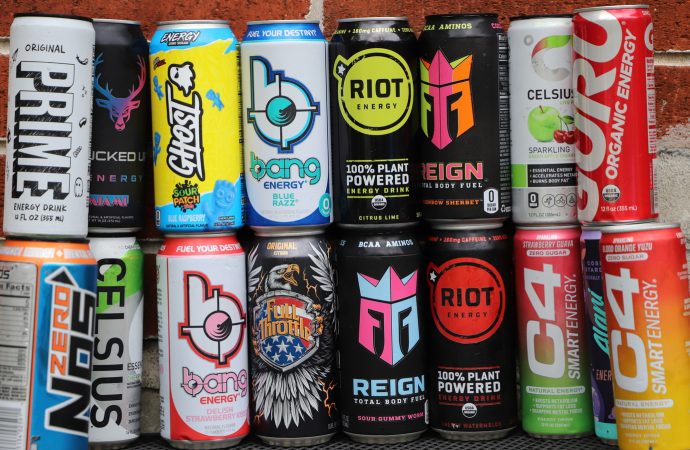Introduction According to the latest insights by Renub Research, the United States Energy Drink Market is projected to surge from US$ 20.71 billion in 2024 to a staggering US$ 41.36 billion by 2033, growing at a CAGR of 7.99% between 2025 and 2033. This robust growth underscores the evolving preferences of American consumers—particularly young adults,
Introduction
According to the latest insights by Renub Research, the United States Energy Drink Market is projected to surge from US$ 20.71 billion in 2024 to a staggering US$ 41.36 billion by 2033, growing at a CAGR of 7.99% between 2025 and 2033. This robust growth underscores the evolving preferences of American consumers—particularly young adults, professionals, and athletes—who are increasingly seeking energy beverages to support their dynamic lifestyles.
Key Market Drivers: Performance, Convenience, and Innovation
The United States energy drink market is experiencing unprecedented momentum due to a variety of influential factors:
1. Rising Demand Among Youth and Professionals
The primary consumers of energy drinks in the U.S. are young adults aged 18–35, who consume these beverages to combat fatigue, enhance focus, and increase productivity. The increasing number of fitness-conscious individuals, working professionals, students, and gamers is further amplifying this demand.
2. Expansion of Functional Beverages
Modern energy drinks are no longer limited to caffeine and sugar. Today, manufacturers are introducing functional ingredients like B vitamins, taurine, ginseng, green tea extracts, L-carnitine, and electrolytes that cater to mental clarity, immunity, endurance, and hydration.
3. Flavors and Sugar-Free Innovation
The introduction of diverse flavors, natural sweeteners, and sugar-free options is appealing to health-conscious consumers. Companies like Red Bull, Monster, and Rockstar are adapting quickly by offering low-calorie and organic options to meet changing dietary preferences.
Packaging and Distribution Strategies Boosting Reach
1. Metal Cans Lead, But Innovation Grows
Metal cans continue to dominate the packaging landscape, favored for their recyclability and ability to preserve carbonation. However, innovative sustainable packaging solutions are gaining traction in response to environmental concerns.
2. Omnichannel Distribution: From Gas Stations to Ecommerce
Energy drinks are now available across convenience stores, supermarkets, mass merchandisers, and online platforms. Convenience stores remain dominant, but online sales channels are witnessing a significant uptick due to the ease of doorstep delivery and bulk purchase options.
Emerging Trends Shaping the Market Outlook
1. Gender-Based Product Customization
Brands are tailoring product formulations and marketing campaigns based on gender preferences. For example, women-oriented energy drinks are focusing on natural ingredients and beauty-enhancing properties, while men-oriented offerings emphasize performance, muscle recovery, and endurance.
2. Kids’ Energy Segment Cautiously Expands
Despite concerns about caffeine consumption in minors, some manufacturers are exploring low-stimulant energy beverages for children, enriched with vitamins and fruit extracts. However, this remains a controversial and heavily regulated segment.
3. The Rise of Organic and Natural Energy Drinks
Growing awareness of clean-label products has propelled demand for organic and plant-based energy drinks. Startups and indie brands are disrupting the market by offering preservative-free, all-natural drinks made with green coffee beans, guayusa, yerba mate, and coconut water.
Market Segmentation at a Glance
1. By Type:
- Alcoholic Energy Drinks (rising among party-goers and club segments)
- Non-Alcoholic Energy Drinks (mainstream, includes traditional offerings)
2. By Product:
- Non-Organic
- Organic
- Natural
3. By Packaging:
- Plastic
- Glass
- Metal
- Others
4. By End-User:
- Kids
- Teenagers
- Adults
5. By Gender:
- Men
- Women
6. By Distribution Channel:
- Convenience Stores
- Supermarkets
- Mass Merchandisers
- Foodservice Outlets
- Online Stores
Key Companies Leading the Charge
The competitive landscape is dominated by international beverage giants, niche startups, and health-centric brands. Prominent players analyzed in the report include:
- Red Bull GmbH
- Monster Beverage Corporation
- PepsiCo Inc. (Rockstar)
- The Coca-Cola Company (NOS, Full Throttle)
- Keurig Dr Pepper Inc. (Venom)
- Arizona Beverage Company
- Xyience Energy
- Celsius Holdings Inc.
- VPX (Bang Energy)
Each of these players is investing in R&D, celebrity endorsements, sustainable packaging, and digital marketing to maintain market leadership.
Market Outlook: 2025–2033
Renub Research forecasts strong double-digit growth for premium, organic, and gender-targeted energy drinks during the forecast period. As work-life pressures mount and fitness becomes mainstream, energy drinks will play a crucial role in supporting performance, wellness, and convenience for millions of American consumers.
Additionally, emerging technologies, such as AI-driven personalization, custom drink blends, and smart vending machines, are likely to transform how consumers discover and interact with energy drink brands.
About Renub Research
Renub Research is a Market Research and Consulting Company with more than 15 years of experience, especially in international Business-to-Business Research, Surveys, and Consulting. We provide a wide range of business research solutions that help companies make better business decisions.
We partner with clients across all sectors and regions to identify their highest-value opportunities, address their most critical challenges, and transform their businesses. Our wide clientele includes key players in Healthcare, Travel & Tourism, Food & Beverages, Power & Energy, Information Technology, Telecom & Internet, Chemicals, Logistics & Automotive, Consumer Goods & Retail, Building & Construction, and Agriculture.
Our core team comprises experienced professionals with graduate, postgraduate, and Ph.D. qualifications in Finance, Marketing, Human Resources, Bio-Technology, Medicine, Information Technology, Environmental Science, and more.
Media Contact
- Company Name: Renub Research
- Contact Person: Rajat Gupta, Marketing Manager
- Phone No: +91-120-421-9822 (IND) | +1-478-202-3244 (USA)
- Email: rajat@renub.com
- Website: www.renub.com
10 Frequently Asked Questions (FAQs)
Q1. What is the projected market size of the U.S. energy drink industry by 2033?
The U.S. energy drink market is forecasted to reach US$ 41.36 billion by 2033, growing at a CAGR of 7.99% from 2025.
Q2. What are the major drivers of the energy drink market in the U.S.?
Key drivers include rising energy demand among youth, sports and fitness trends, innovations in sugar-free and natural drinks, and convenient packaging.
Q3. Which distribution channels dominate the market?
Convenience stores lead distribution, followed by supermarkets, foodservice outlets, and online platforms.
Q4. Who are the key consumers of energy drinks in the U.S.?
The main consumers are young adults, athletes, students, and working professionals seeking mental and physical energy boosts.
Q5. What role does product innovation play in market expansion?
Product innovation—especially in natural ingredients, flavor variety, and gender customization—is crucial in attracting new consumers and retaining loyalty.
Q6. Are organic and natural energy drinks gaining popularity?
Yes, the demand for organic, natural, and clean-label energy drinks is rising, especially among health-conscious millennials and Gen Z.
Q7. What are the top companies in the U.S. energy drink market?
Major players include Red Bull, Monster, Rockstar (PepsiCo), Coca-Cola, and Celsius Holdings, among others.
Q8. Is the kids’ segment significant in this market?
Although still emerging, some low-caffeine and vitamin-infused drinks are being marketed for children, though it’s a sensitive and regulated area.
Q9. How does gender influence product trends in this market?
Brands are developing women-specific energy drinks with natural ingredients and lower stimulants, while men’s offerings often highlight strength and performance.
Q10. Where can I access the full market report?
You can explore the complete report and detailed forecast at: United States Energy Drink Market – Renub Research






















